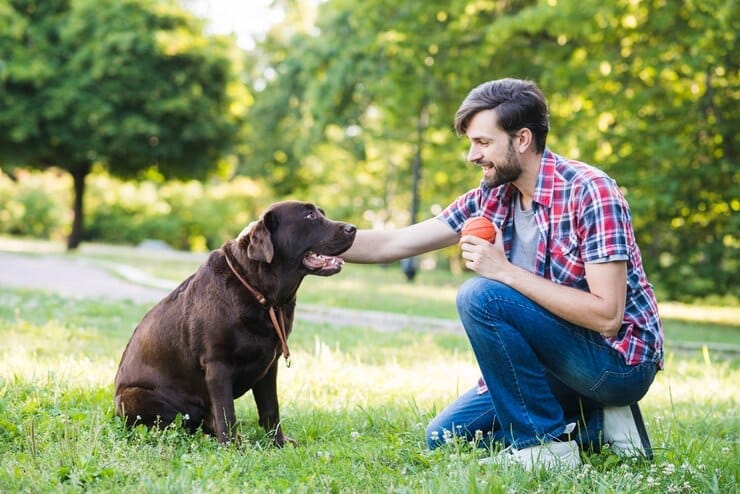Did you know that dogs can have sibling rivalries much like people do? It's called littermate syndrome, and it can sometimes be a serious issue when pups from the same litter are raised together.
It's not something that a lot of people know about. But it is something that dog owners should be aware of, especially if you are thinking of bringing home a new puppy or two.
Read on to learn more about what littermate syndrome is, how to avoid it, and what you can do if it happens in your household.
What is Littermate Syndrome?
The simplest answer is that one of your pups can start behaving in unacceptable ways. Not only can that take the joy out of pet ownership, but it can also escalate into truly dangerous situations, especially in same-sex sibling rivalry.
It might seem like a brilliant idea to bring home two puppies that can play together and keep each other from being lonely. However, those two pups have the same life experience - or lack thereof. Everything is new to both of them. New is scary.
When a pup is paired with an older, more experienced dog, the younger can learn from the older. Puppies only reinforce each other's fears and bad behavior.

Do Dogs Recognize Their Siblings?
For sibling rivalry to occur, the dogs must first be able to recognize each other as family members. You might ask if that's even possible.
Studies show that dogs can recognize their mother and littermates, probably more by smell than by sight. While individuals have a unique scent, nursing moms and littermates will have some of the same scents for as long as they remain together.
And that's likely the key. The longer the pups stay together, the longer they can recognize each other.
Ideally, a puppy goes to its new home between the ages of eight and ten weeks. This is the best time to start socializing a pup, exposing them to new things, people, and places. Make sure you are keeping your pup safe and healthy while doing this! It's the best way to bond and build a lifelong partnership with your pet.
When pups stay together past eight or nine weeks, they begin to rely on each other and ignore their humans. Sometimes it's just an annoyance when your dog doesn't pay attention to you. But there's a potentially serious side, too.

What Are the Signs of Littermate Syndrome in Dogs?
Fear of people, fear of other dogs, fear of new situations, and the unwillingness to be separated from each other are common. If unchecked, the pair can become hyper-attached and panic when alone. This is almost as dangerous as aggression.
Training is hard because they only want to play with each other. And their play can get out of control quickly! A hard to handle dog is no fun. Two hard to handle dogs are an invitation to disaster.
In the worst cases, same-sex siblings might become aggressive and fight each other to the point of injury as they come to sexual maturity. Dog fights are scary, and when both dogs are yours, it's devastating.
Aggression towards other dogs, and sometimes even people, may result. Honestly, though, it should never get to this point.
What Are the Challenges of Littermate Syndrome?
The one big challenge of loving two dogs who are uncontrollable, untrainable, and perhaps even becoming dangerous is that no one - human or canine - is happy.
You cannot take them anywhere. You cannot leave them anywhere. No one wants to dog sit for you. Even a simple walk in the park becomes a test of wills. You against the two of them.
And what happens if one of the dogs needs an overnight stay at the vet for surgery? You'll have two frantic dogs, with the possibility of injury to both of them, and to any humans who get in the way. An accidental dog bite hurts just as bad as an intentional one and a dog usually only gets one bite before the law steps in.

How Can Littermate Syndrome in Dogs Be Prevented?
First, it's not a wise idea to bring home two pups from the same litter. It's a much better idea to get a puppy and invest in training to get the dog you want. Let that one mature a bit.
Then, you can pick out a second pup from a different litter. Opposite sexed dog pairs sometimes get along better than same sexed dog pairs.
The pup will look to the older dog to see how to respond to new situations. It might make basic training easier, too. Watching the older dog go through the training exercises can give a younger dog a heads up about what's expected.
Socialize, socialize, socialize. Between the ages of eight and twelve weeks, puppies need to be introduced to all kinds of different situations. If your vet approves, introduce them to other puppies and well-behaved dogs. Take them out to meet well-behaved people, too. Let them see and hear scary things.
What If I Already Have Littermates?
It's easy to fall in love with puppies! Yes, that was meant to be a plural. In fact, it's hard to pick just one when faced with a litter. Each and every one is precious.
If you've never heard of "littermate syndrome," it's easy to wind up with siblings. After all, if one is adorable, two should be at least twice as cute and four times as fun. So, you bring home two.
While littermate syndrome can appear early on, chances are that you didn't catch it soon enough and you have already fallen in love with both dogs. You want to try to keep them both. That's understandable.
If the situation has not devolved into dangerous fighting, you may be able to do that if you follow some unbreakable rules.

Start right away to minimize current and future issues with your canine family members.
First, it's going to be imperative that both pups learn to be alone. Give them separate beds and crates so that they get used to sleeping apart. Do not waver, no matter how much they howl and cry. This will be a lifelong benefit, even if it's tough in the beginning. Your vet will thank you when one or the other needs treatment.
- Bond with each of them separately. Play time and grooming sessions are chances to learn what each one needs to thrive. It's double the work, but well worth it when the pups start to look at you instead of each other.
- Feed them separately, and in different rooms if possible. Some dog-on-dog aggression is directly related to sharing food bowls. Siblings are used to fighting for a place at mealtime. Take that opportunity away.
- Walk them separately. Both the dog on the leash and the one left home have to learn to behave well. Don't allow either to bark, howl, fight the lead, or tear up the house. It's dangerous for everyone if it's not stopped.
- Basic obedience training separately - is essential to acceptable dog behavior. It's more so when you are working with siblings. It's not cruel. It's vitally important for the lifelong health and happiness of your dogs. Yours, too, when you think about it.
If your pups have already developed some truly bad habits, you will have to evaluate your ability to intercede. Bringing in a professional trainer can be the smartest thing to do.
Conclusion
Not every pair of canine siblings will suffer from littermate syndrome. You've probably known of sibling dog pairs who lived long and happy lives in the same household. Most dogs, like most people, are fairly well-balanced individuals.
Now you are aware of the possible problems that can arise when dog siblings are raised together. Hopefully, you will not be tempted to get pups from one litter. But if you are, you know what the signs of littermate syndrome are, and you are willing to either do the work required to keep both dogs.
We expect a lot from our dogs today. It's only fair that we give them the best possible start in life, so that we can enjoy their companionship for years to come. You, your family, your neighbors, and your dog will all be happier when you minimize the ways that the dog can get into trouble. Good canine citizenship begins with a well-trained and agreeable dog.
When you bring that one perfect pup home, you can give it the best head start by eliminating as many challenges as possible. If you can avoid falling for that second irresistible puppy face, your first choice will have a much better opportunity to bond with you, which is the beginning of training. Proper training makes for a pleasant experience for dogs and owners alike.
Owning a dog should be a joyful experience. And you can own more than one, but it's going to be easier for you and the dogs if you don't have to deal with littermate syndrome.
So, one puppy at a time should be the rule of thumb, no matter how much you'd like to bring home the entire litter.

For more helpful articles about pet-parenting tips, check out the Off Leash blog at TryFi.com.

